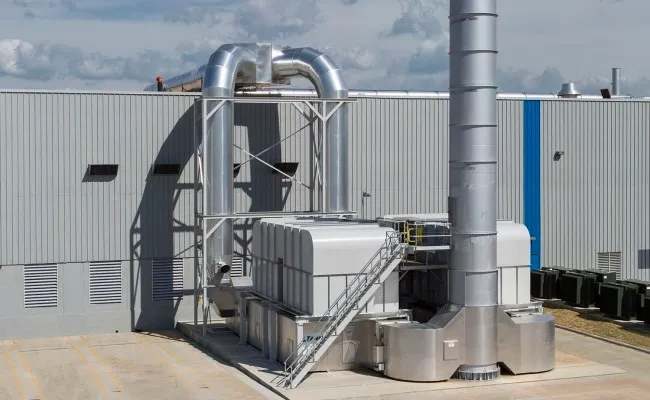(RTO) & (RCO)
Regenerative Thermal Oxidizer (RTO) and Regenerative Catalytic Oxidizer (RCO)
Partner with Vortex for your installation and maintenance of your emissions equipment.


Regenerative Catalytic Oxidizer (RCO)
The regenerative catalytic oxidizer (RCO) technology has evolved significantly as an efficient method to control volatile organic compounds. The RCO technology favors using oxide catalysts because it allows for easy compensation of lower activity by an increase in the catalyst amount or temperature. Heat transfer and accumulation properties of ceramic packing material strongly influence RCO performance. The rate of heat transfer affects the temperature gradients along the bed length that, in turn, determine the volume of material required to preheat the gas to the temperature of catalytic or thermal oxidation.

Regenerative Thermal Oxidizer (RTO)
One of today's most widely accepted air pollution control technologies across industry is a regenerative thermal oxidizer, commonly referred to as a RTO. RTOs use a ceramic bed which is heated from a previous oxidation cycle to preheat the input gases to partially oxidize them. The preheated gases enter a combustion chamber that is heated by an external fuel source to reach the target oxidation temperature which is in the range between 760 °C (1,400 °F) and 820 °C (1,510 °F). The final temperature may be as high as 1,100 °C (2,010 °F) for applications that require maximum destruction. The air flow rates are 2.4 to 240 standard cubic meters per second.[4]



Fabrication and Install
Industrial dust collection system exhaust stacks are generally fabricated from steel, the most economical option. Several factors are critical in determining the design of a stack.Volume: The most critical parameter for stack design is the volume of air that is being discharged. The volume will determine the stack diameter required to achieve the desired air exit velocity that is used in the modeling process.Location: Stacks must be able to resist the prevailing wind and seismic loadings they will experience:
• Coastal regions would present higher wind loadings than inland locations.
• Exposures also influence wind loadings depending upon whether the location is in an urban area, on open terrain or in an area with hills.
• More active seismic areas would result in higher earthquake design forces.Configuration: Stack diameters are based on a minimum exit velocity for dispersion; however, oftentimes the required height of the stack will result in a stack that requires special design considerations. Taller, slender stacks are more prone to excessive vibrations caused by dynamic wind load effects. To limit vibrations, designs may include aerodynamic methods like helical strakes or shrouds. Designs also may include damping to absorb energy, such as tuned mass dampers or preformed base fabric pads.Find Video that shows how helical strakes help to reduce vortex shedding.Air Temperature: The type of steel (stainless, carbon, COR-TEN®) used in stack fabrication often will be dictated by the temperature of the air being discharged. For example, the strength and elasticity of carbon steel declines as air temperatures exceed a few hundred degrees Fahrenheit. In those cases, stainless steel is preferred as it performs better in temperatures up to and exceeding 1,000 degrees.Testing: Test ports are often required to facilitate air testing at different elevations of the stack. Test platforms with caged ladders or stairs are then required for access. These platforms are considered a source of additional gravity, wind and seismic load when designing a stack.
